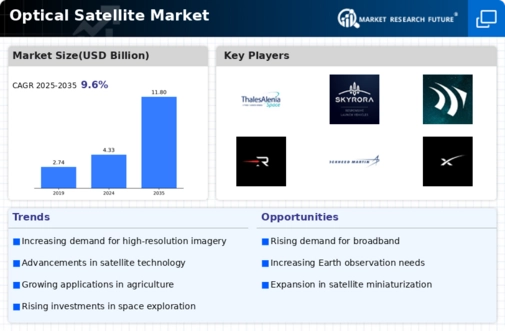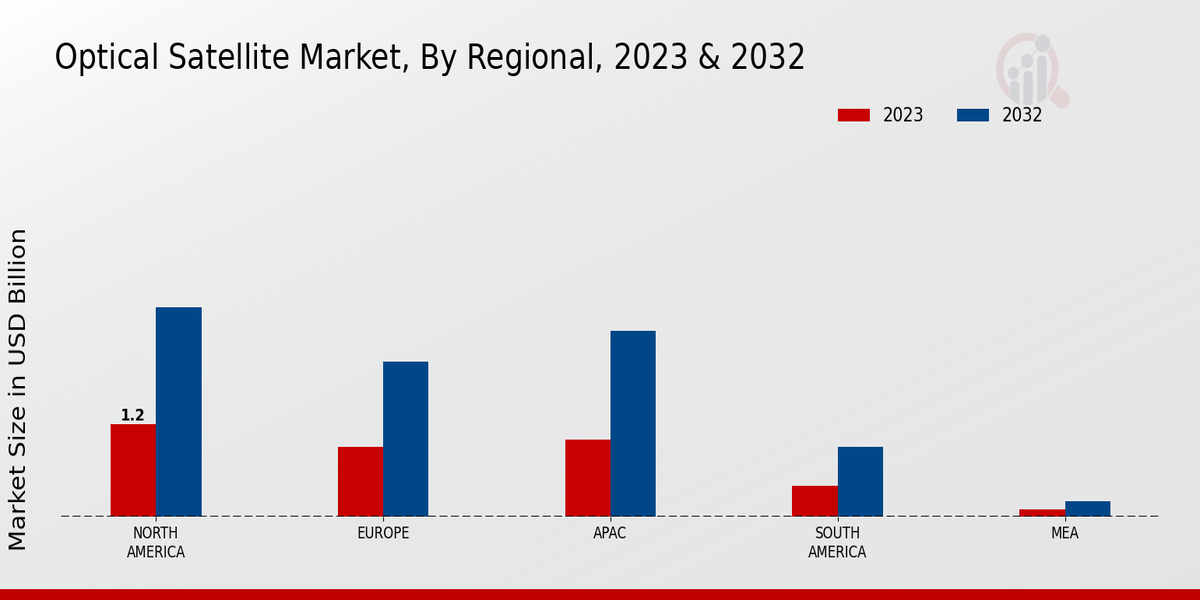Market Trends and Projections
Rising Commercial Applications
The Global Optical Satellite Market Industry is witnessing a rise in commercial applications, driven by the increasing demand for satellite imagery across various sectors. Industries such as agriculture, forestry, and telecommunications utilize optical satellite data for precision farming, resource management, and infrastructure development. Companies like Planet Labs and Maxar Technologies are at the forefront, providing high-resolution imagery to commercial clients. This growing commercial interest not only diversifies the market but also contributes to its projected growth, as businesses recognize the value of satellite data in decision-making processes.
Increasing Government Investments
Government investments in space programs significantly influence the Global Optical Satellite Market Industry. Countries worldwide are allocating substantial budgets to enhance their satellite capabilities, recognizing the strategic importance of space technology. For instance, the United States government has increased funding for NASA and the National Oceanic and Atmospheric Administration, focusing on satellite development for climate monitoring and national security. This trend of increased funding is likely to propel the market towards an estimated value of 11.8 USD Billion by 2035, showcasing the long-term commitment to optical satellite technologies.
Advancements in Satellite Technology
Technological advancements play a pivotal role in shaping the Global Optical Satellite Market Industry. Innovations in sensor technology, miniaturization, and data processing capabilities enhance the performance and efficiency of optical satellites. For example, the deployment of high-resolution imaging sensors allows for more precise data collection, catering to various applications such as agriculture and urban planning. These advancements are expected to contribute to a compound annual growth rate of 9.57% from 2025 to 2035, indicating a strong trajectory for market growth.
Growing Demand for Earth Observation
The Global Optical Satellite Market Industry experiences a notable surge in demand for Earth observation capabilities. Governments and organizations increasingly rely on optical satellites for monitoring environmental changes, urban development, and disaster management. For instance, the European Space Agency's Copernicus program utilizes optical satellites to provide critical data for climate monitoring. This growing reliance on optical imagery is projected to drive the market's value to approximately 4.33 USD Billion in 2024, reflecting a robust interest in satellite-based data solutions.
Global Collaboration in Space Initiatives
International collaboration in space initiatives significantly impacts the Global Optical Satellite Market Industry. Partnerships among countries and organizations facilitate knowledge sharing, resource pooling, and joint missions, enhancing the capabilities of optical satellite systems. Programs like the International Space Station exemplify successful collaboration, enabling advancements in satellite technology and data sharing. Such cooperative efforts are likely to foster innovation and drive market growth, as countries work together to address global challenges, including climate change and disaster response.














